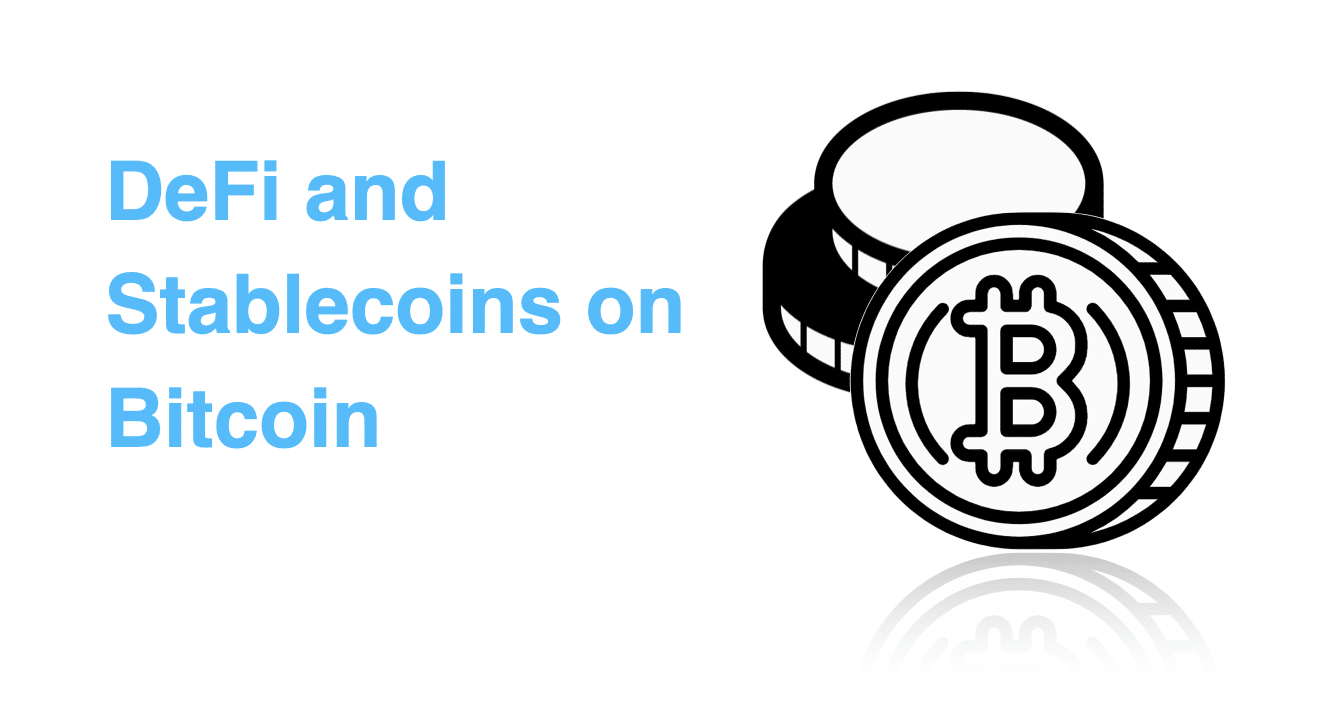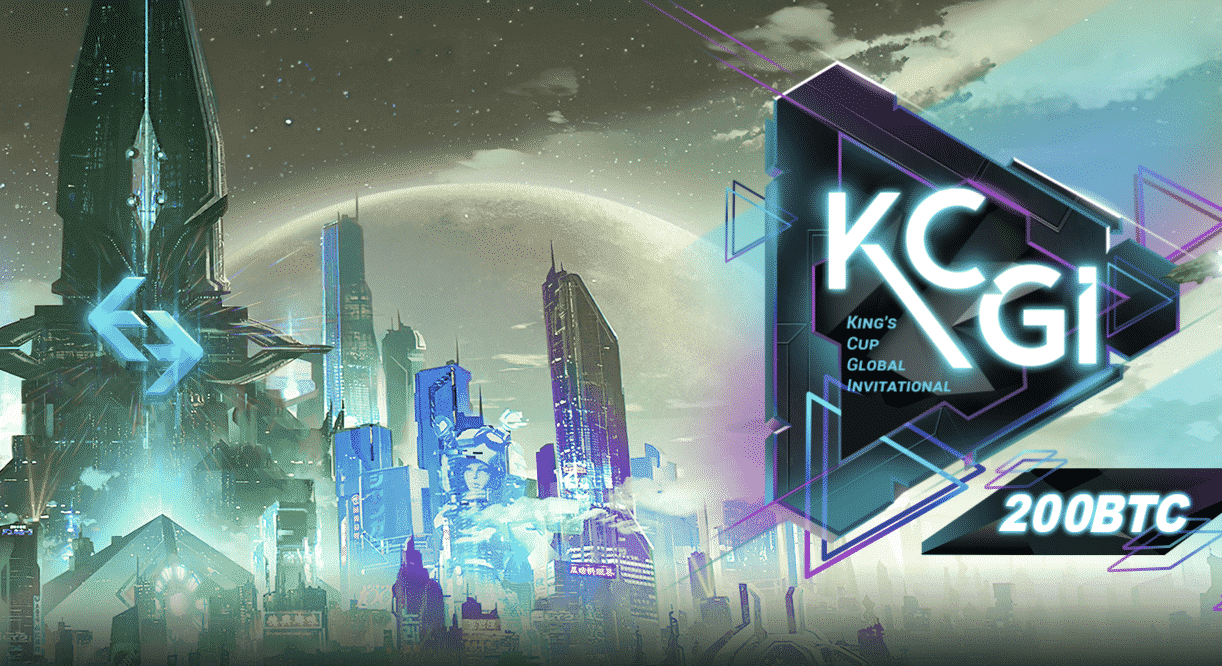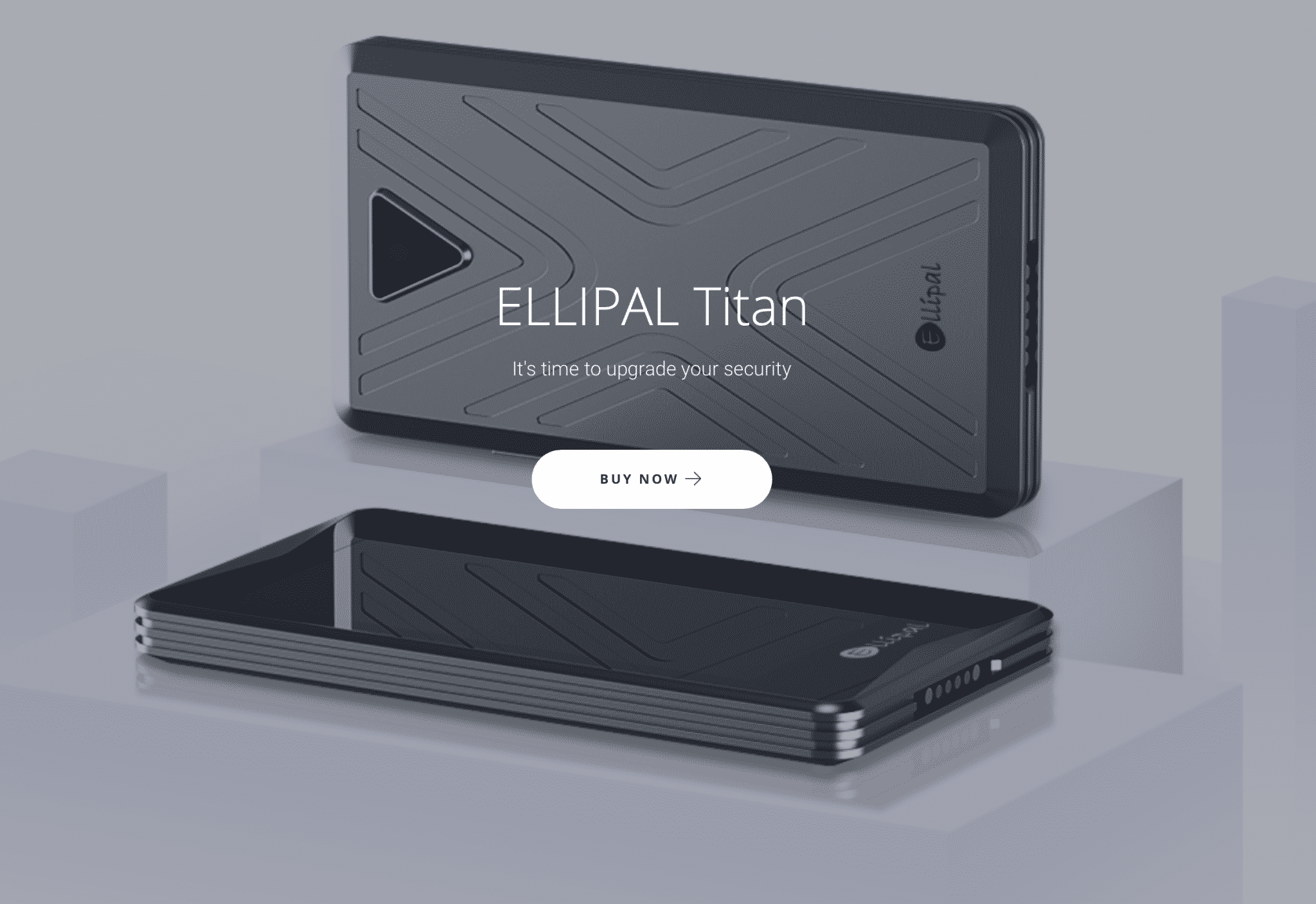 Navigation
Navigation

DeFi and Stablecoins on Bitcoin
|
|
2020 was the year of DeFi. Blockchain technology has empowered developers to explore a whole new area of finance applications known as decentralized finance or DeFi. To date, Ethereum has managed to rule the roost when it comes to DeFi platforms. However, it looks like Bitcoin has started to make a serious claim to the throne.
How can Bitcoin leverage DeFi?
Bitcoin’s core scripting language is extremely simplistic and straightforward. Satoshi Nakamoto incorporated this simple language by design to make transactions as uncomplicated as possible. However, this is the exact reason why Bitcoin can’t handle smart contracts. However, things are about to change with side chain implementations, in particular – RSK.
RSK enables developers to create applications compatible with Ethereum (the web3/EVM/Solidity model) while still enjoying the Bitcoin blockchain’s security. The core features of RSK are as follows:
- It’s a Turing-complete resource-accounted deterministic virtual machine (for smart contracts) is compatible with the Ethereum Virtual Machine (EVM).
- A SHA256D merge-mining consensus protocol (for consensus security relying on Bitcoin’s miners) with a 30-second block interval. (for fast payments).
- A two-way pegged Bitcoin sidechain (for BTC denominated trade) based on a Powpeg
RSK’s vision is to boost the future of DeFi and Bitcoin, which is why they have combined both. RSK’s DeFi implementations such as Money On Chain (MOC) and RIF are a testimony to the enormous potential of DeFi and how it is making finance more inclusive and easily accessible.
DeFi vs CeFi – Why decentralized finance is the future
Developers are scrambling to make killer DeFi applications because of the many advantages it provides over CeFi (centralized finance). To understand these differences, let’s go through some points.
#1 Global and public
DeFi applications are wholly public and permissionless, allowing anyone, anywhere, to access these solutions upon meeting the minimum requirements. Since they don’t involve banks or stringent KYC procedures, they are exponentially more accessible than traditional centralized finance. Due to this lack of restrictions, DeFi is a lot more inclusive and allows the “unbanked masses” to access financial services.
#2 Completely autonomous
DeFi, by its very definition, is a decentralized entity. As such, users are autonomous entities with control over their funds and their data. By leveraging simple public-key cryptography, users can encrypt information related to the asset being transferred. One can access this encrypted information only after getting explicit permission from the owner. Plus, since most of the DeFi systems are governed by distributed consensus, it gives the users the right to dictate the protocol’s future growth.
#3 No intermediaries
Centralized finance applications usually have a ton of intermediaries. Most of these intermediaries are in their place to ensure that the different processes comply with existing regulations. Unfortunately, the presence of these intermediaries makes the system more vulnerable to corruption and manipulation.
On the other hand, DeFi applications have rules hardcoded into their protocol, making them compliant by default. In simpler terms, DeFi apps must comply with predefined terms and conditions to operate. Plus, once these conditions have been hardcoded, they cannot be tampered with. This ensures that DeFi apps can run without intermediaries.
#4 Censorship Resistant
Centralized organizations are susceptible to censorship in two ways – through its governance body or through the government. However, DeFi systems are by their very definition global and decentralized. This lack of a central governing body ensures that DeFi apps are free from censorship.
RSK – Enabling Bitcoin DeFi
RSK means diversifying the DeFi space by incorporating Bitcoin-based solutions backed by RIFOS and others. They mean to build an entire framework that’s self-sufficient, self-sustaining, and user-friendly. Having said that, let’s go through some RSK-based DeFi solutions.
#1 RSKSwap
Let’s start off with RSK’s native decentralized exchange – RSKSwap. It’s a fork of the Uniswap v2 protocol that adopts the Automated Market Making (AMM) to determine asset prices. It allows liquidity providers the opportunity to earn a passive income by staking their assets. At the same time, it also addresses the liquidity concerns facing the DeFi sector.
The features of RSKSwap are as follows:
- Users can lock their ERC20 tokens to a specific staking wallet and receive a “pool token,” which they can leverage to use the swapping protocol.
- It relies on mathematical formulas to set the price of a token.
- Users can instantly swap their ERC20 tokens and charge a 0.3% fee.
- The fees are provided to the liquidity providers as a means for them to generate revenue.
- The main strengths of RSKSwap are that it’s – decentralized, permissionless, secure, and censorship-resistant.
#2 Decentralized Token Exchange (TEX)
The Decentralized Token Exchange (TEX) has been created by Money on Chain and is based on “The London Gold Fix.” The latter sets the gold value twice a day based on the current order book (OB). Users who place orders in the OB can cancel them any time they want. So, not only are the users in complete control of their assets and completely peer-to-peer.
The features of the TEX are as follows:
- Limit orders: User places a buy or sell order, which establishes a limit up to which the user wants the operation to be executed.
- The total amount of the order is deducted from the balance of the user’s account
- Market maker orders: Upon entering a market maker order you indicate a percentage difference with a fair share.
- The order is executed as long as the established price meets the restrictions to buy or sell at a certain price.
The TEX order book has two components – Sale Limit and Purchase Limit. The OB is processed as follows:
- Whenever an order is inserted, the sales branch gets sorted in ascending order by price and the purchasing branch by descending order. The positions are then paired.
- Orders with the same price are ordered by the date of entry to make sure that the oldest ones are closed first.
- If the first pair of the table’s purchase price is lower than the sale price, the OB is impossible, and everything gets returned for the next tick.
- If an operation can’t be closed, it gets returned to the OB for the next trick. If the position is partially closed, the return to the OB is also partial.
#3 Stablecoins
While stablecoins have been around for a long time, they are vital to the current DeFi landscape. It gives holders the unique benefits of digital currencies without volatile price actions. As such, these coins are free from market sentiment, project fundamentals, or even whale manipulation.
The advantages of stablecoins
Stablecoins have several advantages over fiat currencies. Some of these are:
- Speed: Stablecoins are digital assets, which automatically makes them faster than their fiat versions. As such, they can be used to provide 24X7, instantaneous settlements for bank transactions.
- Sustainable: Most financial service providers like Visa, Mastercard, and Amex charge a certain amount as transaction fees. To mitigate this, most business owners have to transfer the free to the customers or take cash only, which are both unsustainable methods. Transaction fees in stablecoins are exponentially smaller.
- Borderless: Stablecoins, like other cryptocurrencies, are borderless by design. Via stablecoin-integration DeFi applications can enable instantaneous money transfer from the remotest areas of the world. The biggest advantage of this approach is that it is extremely beneficial for people living in countries with unstable economies. People in those countries can hedge financial risk by investing in stablecoins.
- Customizable: Finally, we come to one of the most useful use-cases of stablecoins – customization. At its very core, stablecoins is nothing but a bunch of code. It could be easily integrated with a variety of different protocols. Stablecoins can also be tweaked to add cutting-edge features to them based on different requirements.
RSK and Money On Chain stablecoin
Money on Chain (MOC), a bitcoin-collateralized DeFi protocol powered by RSK is one of the first major solutions to tap the premier cryptocurrency for DeFi. MOC is aimed toward investors looking for stability as well as profit-making potential associated with volatile currencies.
Having launched its mainnet in December 2019, the MOC protocol has been dishing out a wide array of decentralized financial products based on RSK’s blockchain. MOC aims to disrupt the fiat-dominated financial system that cannot keep up with the dynamics of today’s business environment. To overcome the volatility problem, MOC offers a BTC-pegged stablecoin using a three-party system.
Money on Chain had created the world’s first-ever Bitcoin collateralized stablecoin.
The stablecoin protocol uses a three-party system. Two separate tokens and a derivative financial instrument. The two tokens are:
- Dollar on Chain (DOC): DOC is pegged to the US dollar and conducts quick transactions. DOC can be considered a safe haven from Bitcoin’s volatility. So if you want to buy something with Bitcoin, you can hold DOC and mitigate risk during the financing process.
- BitPRO (BPRO): the second token has been designed for Bitcoin holders to passive income on their coins. BPRO holders get awarded from a percentage of platform-collected fees, an interest rate, and a small leverage on Bitcoin’s price.
Regarding scalability of payments using DoC token, Gabriel Kurman, Co Founder of RIF, commented:
“RIF Lumino integrates DoC, providing scalability for the use of Dollar on Chain token. Launching DoC on the Lumino payments network will allow thousands of instant transactions with near zero fees.”
#4 RSK and RIF DeFi
Similar to the MOC protocol, RSK powers another DeFi protocol called RIF On Chain (ROC). The ROC platform is a Bitcoin-based DeFi ecosystem built by MOC on top of the RSK blockchain network. This robust DeFi ecosystem is backed by RIF tokens and offers a rapid and safe platform for:
- Transacting RIF-backed products.
- Enabling RIF token holders to generate passive income.
- Offering the best security and transparency to its users among all DeFi platforms.
- Catering to users’ need for volatility-free digital currency by issuing bitcoin-collateralized stablecoins.
- Providing a bitcoin-leverage asset for users who wish to increase their long position exposure.
How to Interact with ROC?
To interact with ROC users must first ensure that they have RIF tokens in a compatible wallet like RWallet, Nifty, MetaMask, etc. After that, they must approve the automated connection of the wallet with the ROC platform.
Users can now access the RIF platform by using the three ecosystem tokens – RIF Dollar (RDOC), RIFpro (RIFP), and RIFX.
Let’s take a deeper look at these three RIF assets.
- RDOC: The RIF Dollar on Chain is a USD-pegged stablecoin powered by RSK’s blockchain network. Being fully collateralized by RIF tokens, it allows users to redeem their full position on the stablecoin at contract expiration or partial pre-expiration. The latter is subject to the liquidity of redeemable RDOC tokens. RDOC tokens can be acquired by users directly without having to provide any collateral. The main use of this token is that it can move freely between platforms users and be used to purchase goods and services.
- RIFpro (RIFP): The RIFP is the cornerstone of the ROC ecosystem and enables the minting of RDOC and RIFX via a token staking model. It mirrors the volatility of the RIF token and receives some leverage from the RDOC stablecoins. Holders are encouraged to hold on to this token to generate passive income.
- RIFX: RIFX is a RIF leverage decentralized long position. It is based on an automated smart contract that renews every 30 days and has a leverage factor of 2x at the beginning of its lifespan and variable leverage afterward. Like the RDOC stablecoins, one can sell RIFX tokens at any time without having to wait until contract expiration.
Conclusion
As you can see, Bitcoin and DeFi no longer have to be mutually exclusive. Thanks to the RSK side chain, developers can now leverage the most stable and secure blockchain in the world to unlock the fantastic world of decentralized finance.






